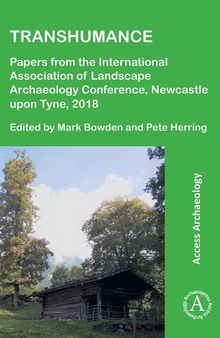 جزییات کتاب
جزییات کتاب
Transhumance presents a collection of papers exploring the practice, impact and archaeology of British and European transhumance, the seasonal grazing of marginal lands by domesticated livestock, usually accompanied by people, often young women. All but one were first given in 2018 at the Newcastle and Durham conference of the International Association of Landscape Archaeology. Their range is wide, geographically (Britain, Italy, Spain, France and Norway) and temporally (prehistory to the present day). The approaches taken include excavation and artefact analysis, fieldwalking, archaeological survey, landscape archaeology and history, analysis of ancient texts, inscriptions and records, ethno-archaeology, social network analysis and consideration of the delicate balances between the natural resources that transhumants exploit and the intangible cultures that are developed and sustained as they do so. The volume re-emphasises that much of European history and culture has been and in some places continues to be dependent on the annual migrations to and then back from the mountains, forests and bogs. It notes and explains how transhumance systems are not timeless and unchanging, but instead respond to wider economic and social changes. But, it also shows how transhumance itself contributes to changes, and continuities, including how the organisation of access to common pastures crystallises principles that underpin much broader legal and social systems.



 دانلود کتاب
دانلود کتاب

 جزییات کتاب
جزییات کتاب





 این کتاب رو مطالعه کردید؟ نظر شما چیست؟
این کتاب رو مطالعه کردید؟ نظر شما چیست؟
